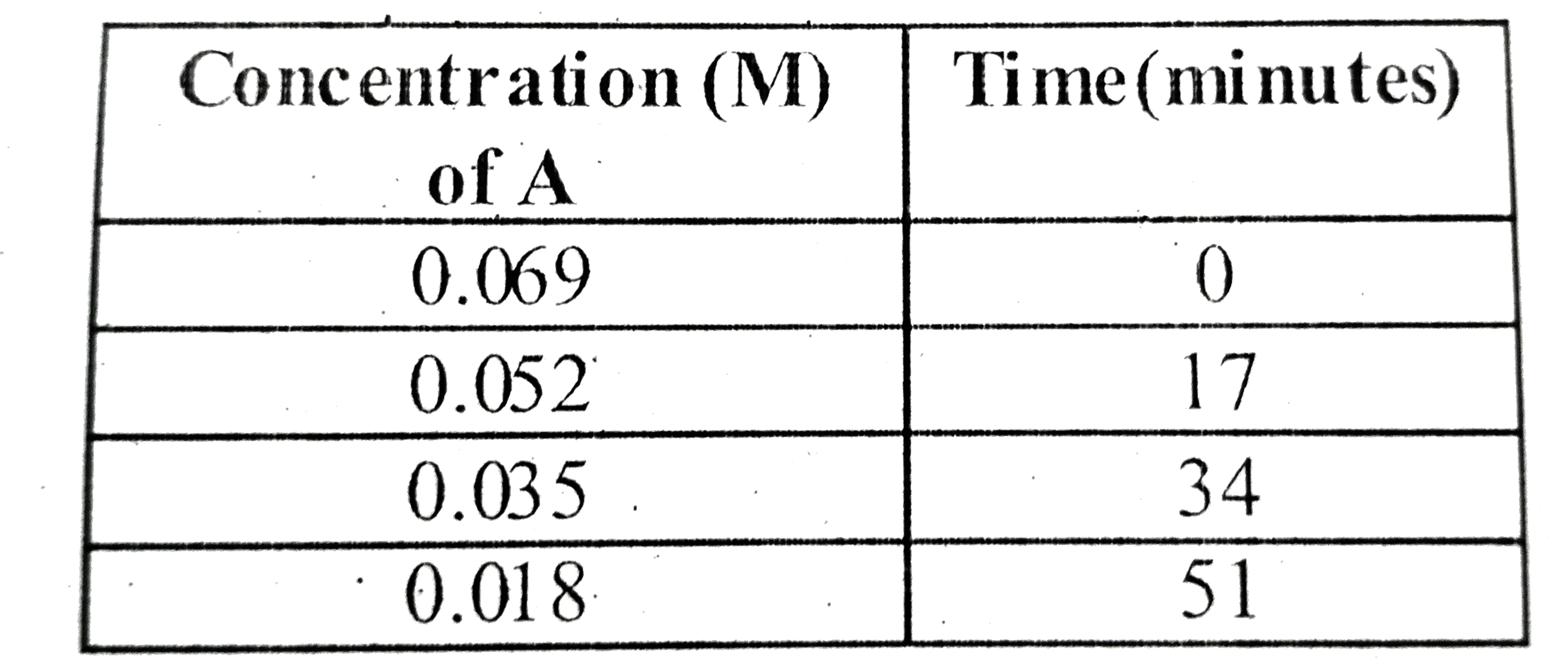If two reactants part in a reaction, then:
It can never be of second order
It can never be of first order
It can never be unimolecular
It can never be bimolecular
The correct Answer is:C
To solve the question regarding the reaction between two reactants, let's analyze the situation step by step.
Step 1: Understand the Reaction
We have two reactants, A and B, participating in a reaction represented as:
A+B→P
This indicates that both reactants are involved in the formation of the product P.
Step 2: Identify the Order of Reaction
The order of a reaction is determined by the sum of the powers of the concentration terms in the rate law expression.
Step 3: Write the Rate Law
For the reaction A+B→P, the rate law can be expressed as:
Rate=k(A)m(B)n
where m and n are the orders with respect to reactants A and B, respectively.
Step 4: Analyze Possible Orders
1. Zero Order: This would imply that the rate of reaction does not depend on the concentration of A or B, which is not possible here since both reactants are involved.
2. First Order: It is possible for the reaction to be first order with respect to one reactant and zero order with respect to the other, or first order with respect to both.
3. Second Order: The reaction can be second order if m+n=2. This can happen if both reactants are first order, or one is first order and the other is zero order.
4. Unimolecular: A unimolecular reaction involves only one reactant in the rate-determining step, which is not the case here since we have two reactants.
Step 5: Conclusion
Based on the analysis:
- The reaction cannot be zero order.
- It can be first order.
- It cannot be unimolecular.
- It can be second order.
Final Answer
Thus, the correct conclusion is that the reaction can be first order or second order but cannot be unimolecular.
We have two reactants, A and B, participating in a reaction represented as:
A+B→P
This indicates that both reactants are involved in the formation of the product P.
The order of a reaction is determined by the sum of the powers of the concentration terms in the rate law expression.
For the reaction A+B→P, the rate law can be expressed as:
Rate=k(A)m(B)n
where m and n are the orders with respect to reactants A and B, respectively.
1. Zero Order: This would imply that the rate of reaction does not depend on the concentration of A or B, which is not possible here since both reactants are involved.
2. First Order: It is possible for the reaction to be first order with respect to one reactant and zero order with respect to the other, or first order with respect to both.
3. Second Order: The reaction can be second order if m+n=2. This can happen if both reactants are first order, or one is first order and the other is zero order.
4. Unimolecular: A unimolecular reaction involves only one reactant in the rate-determining step, which is not the case here since we have two reactants.
Based on the analysis:
- The reaction cannot be zero order.
- It can be first order.
- It cannot be unimolecular.
- It can be second order.
Thus, the correct conclusion is that the reaction can be first order or second order but cannot be unimolecular.
Similar Questions
Knowledge Check
 , Reactant (A) in this reaction is :A
, Reactant (A) in this reaction is :A B
B C
C Dboth (b) and ©
Dboth (b) and ©The number of molecules of the reactants taking part in a single step of the reaction tells about. :
Aorder of a reactionBmolecularity of a reactionCfast step of the mechanism of a reactionDhalf-life of the reaction
Assertion (A) : Formation of HI is a bimolecular reaction.
Reason (R ): Two molecules of reactants are involved in this reaction.
View SolutionHow does the mass of reactants change in a chemical reaction?
View SolutionConsider a reaction A+B→C , in this reaction both reactants are in the same phase, then, may be this reaction is :
View SolutionThe law that states that the mass of the products equals the mass of the reactants in a chemical reaction.
View SolutionThe reactant (A) is the reaction is :
 .
.
View SolutionThe heat content of the products is more than that of the reactants in an…………….reaction.
View Solution

